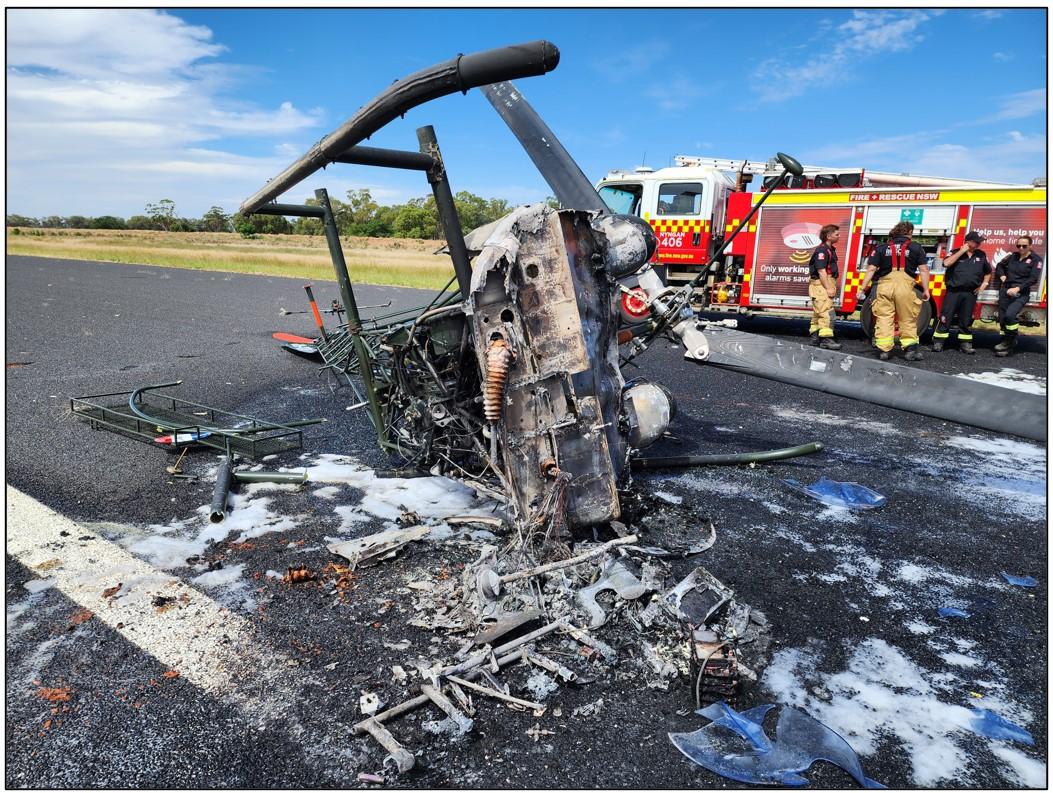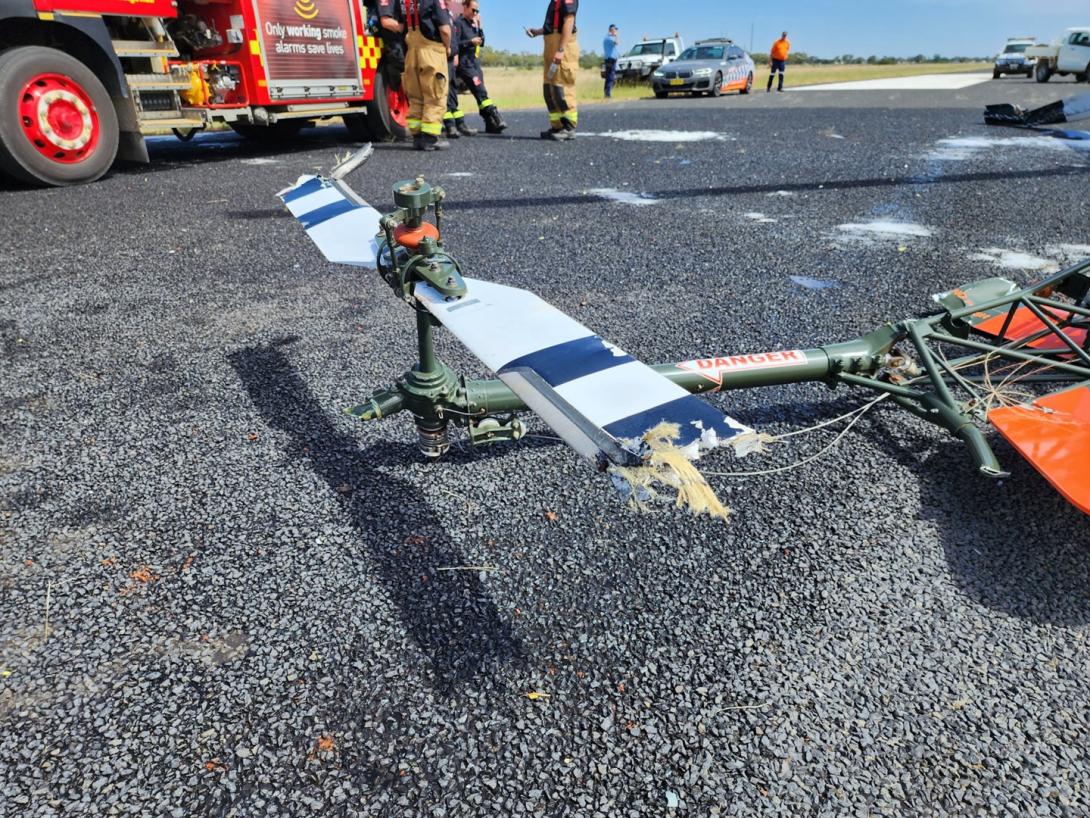What happened
On 15 March 2024, a Bell 47G helicopter was conducting a post-purchase familiarisation flight at Nyngan, New South Wales. At 1200 local time, while hovering, the pilot commenced a practice left pedal clearing turn through the 180-degree position. The helicopter experienced weathercocking[1] followed by an unanticipated yaw. The wind was gusting 15‑20 knots.
The pilot detected that the yaw rate was increasing and climbed the helicopter to 30 ft, attempting to control the increased rate of rotation through the application of the opposite anti-torque pedal. The pilot then experienced a loss of control resulting in a hard landing. The left skid subsequently detached from the airframe and the main rotor blades contacted the ground resulting in damage to the tail rotor guard tube and a tail rotor frame crack.
The pilot detected leaking fuel from the fuel vents on top of the left fuel tank and a subsequent fire commenced at the base of the helicopter engine. The helicopter was destroyed by fire.
Figure 1: Helicopter damage – looking at the base of the helicopter

Source: Operator
Figure 2: Helicopter tail rotor damage

Source: Operator
Pilot’s comments
Based on the pilot’s account of the accident and assessment of the recovered aircraft, mechanical malfunctions were ruled out as a contributing factor.
The pilot advised that they may not have held an effective amount of pedal in an attempt to regain control. A better outcome could have been achieved by transitioning to forward flight allowing them to arrest the rotation speed through the use of the pedals in a controlled manner to improve directional stability.
Safety message
Unanticipated yaw is described by the European Union Aviation Safety Agency (EASA) as ‘an unanticipated or unintended rotation of the helicopter about the yaw axis. It occurs when the pedal input is not appropriate, and the helicopter suffers a sudden and unexpected yaw’.
A situational awareness of flight characteristics, weather conditions and recovery procedures are required when conducting low speed flight. The various wind directions can result in significantly differing rates of turn for a given pedal position. The most important principle for the pilot to remember is that the tail rotor is not stalled. The corrective action is to apply pedal opposite to the direction of the turn. Avoiding a loss of control may best be accomplished by pilots avoiding conditions which are conducive to unanticipated yaw. Appropriate and timely response is essential and critical. By maintaining an acute awareness of wind and its effect upon the helicopter, the pilot can significantly reduce exposure to an unanticipated yaw.
About this report
Decisions regarding whether to conduct an investigation, and the scope of an investigation, are based on many factors, including the level of safety benefit likely to be obtained from an investigation. For this occurrence, no investigation has been conducted and the ATSB did not verify the accuracy of the information. A brief description has been written using information supplied in the notification and any follow-up information in order to produce a short summary report, and allow for greater industry awareness of potential safety issues and possible safety actions.
[1] Weathercocking - a helicopter with its tail into wind is in an unstable position. The wind acts on the vertical fin and continuous and variable yaw control inputs are required to achieve precise control and counteract the tendency of the helicopter to turn into wind.


